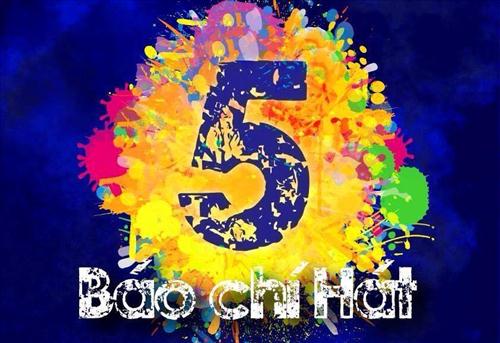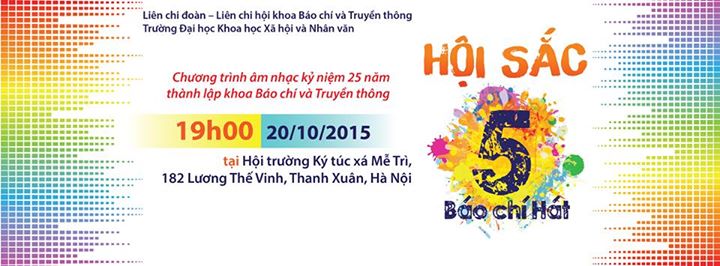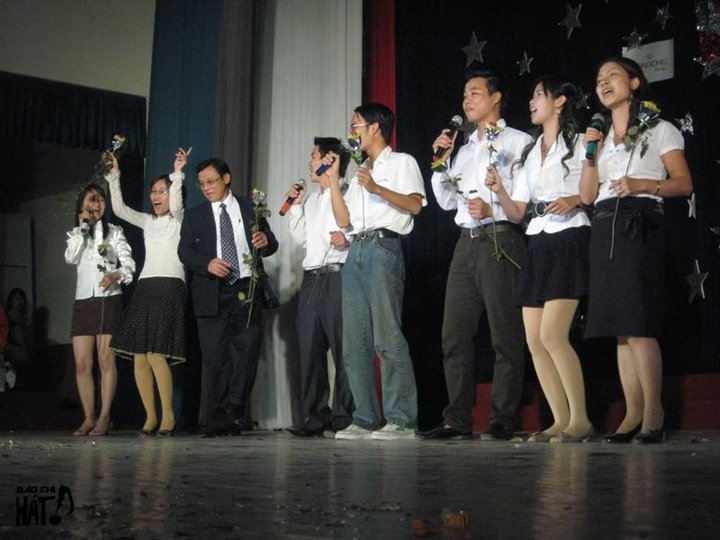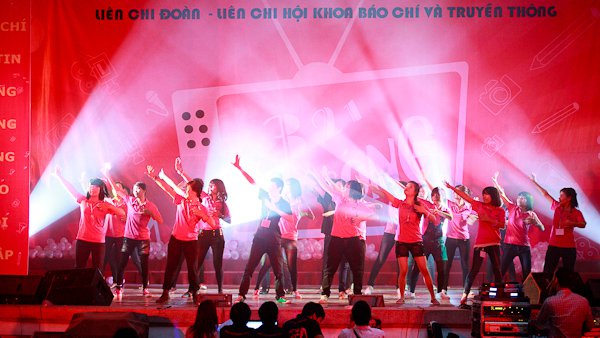

Looking back on the past, it can be seen that singing journalism has become a cultural and social playground not only for students of the Faculty of Journalism and Communication in particular, but it has created waves, spreading to students of the entire University of Social Sciences and Humanities, VNU in general. This is a place to express enthusiasm, the traditional flame is continued from the past to the future; a place to contribute to building the brand and promoting the image of journalism students - the brand of singing journalism is increasingly large in scale, stature and professionalism.
In 2007, the first issue of Singing Journalism was born. The original idea of the generation of students K49, K50 of the Faculty of Journalism and Communication at that time was to create a playground connecting generations of the faculty. The core generation that laid the foundation for Singing Journalism that year were the K49, K50, K51 classes and the new students of K52 class.

Lecturers and students perform together in the singing journalism program
The flame of the previous generation was passed on to the following generation of students, and Journalism K51 and K52 became the generation that shouldered the mission of the singing journalism program 2. Joining the effort in that period were the new students of class K53. During this period, the organization of singing journalism gradually moved towards professionalism, creating a solid foundation for the following seasons of singing journalism.

Performing arts performance in the press sing 3
In 2010, Singing Press 3 returned. This was the moment to show the breakthrough of K53, K54, along with the help of K52 seniors and new students of K55 in the organization. Singing Press 3 was held on the occasion of the Faculty's 20th anniversary. From the experience of two seasons of Singing Press, the organization of Singing Press 3 became more organized and methodical.
From Singing Press 3 onwards, each singing press program has a theme, a logo, a uniform, and a communication strategy to promote it systematically to the outside world.
The theme of Singing Press 3 is “321 on air”, the logo is a stylized image of a television with a broadcasting antenna symbolizing the profession and characteristics of journalism, the main color is pink, the Flashmode dance that cheers throughout the program is chosen to be a flash dance on the background music of the song Jai Ho. This is the dance that stirred up the yard of the University of Social Sciences and Humanities at that time.
In 2013, Singing Press 4 returned, with the next generation to carry on the fire, journalism students from classes K54 and K55 as the core. Alongside them, there was a generation of former students, students from classes K56 and K57 (new students) as the support.
Singing Press 4 with the theme "passion" as the source of emotions, the color tone throughout the program is "purple and white". The highlight of the Singing Press 4 program is the Flashmob dance based on the music of Marjaani which has attracted a lot of attention not only from the students of the Faculty of Journalism but also from students of other faculties and foreign students. This cheering dance was invested in filming at My Dinh Stadium, with the participation of famous stars and models.
The current generation of students from K57, K58, K59 and the new students from K60 of the Faculty of Journalism and Communication, continuing the Singing Journalism flame of the previous generations, are doing their best to prepare for the final stage, towards the day Singing Journalism 5 "goes on air". With the message Singing Journalism 5 - looking back at the past, looking towards the future; the main theme "colorful gathering" promises to bring a vibrant, colorful program, affirming that the future generation of students will always continue the tradition, be dynamic, brave and creative. This is also a program to mark the 1/4 century of establishment and development of the Faculty of Journalism and Communication - the common home of many generations of journalism students.
Author:Phuong Chi
Newer news
Older news